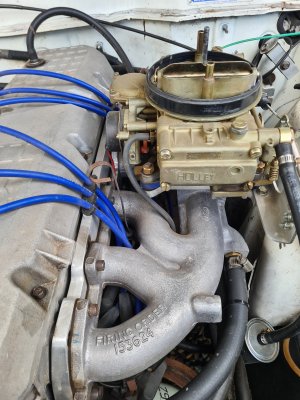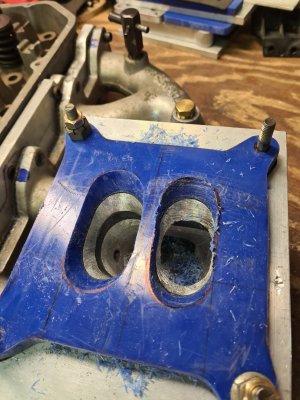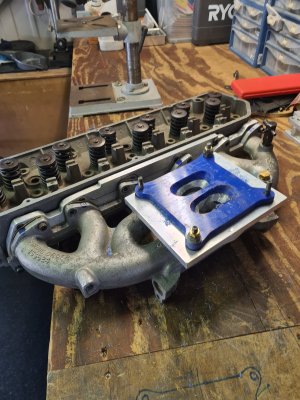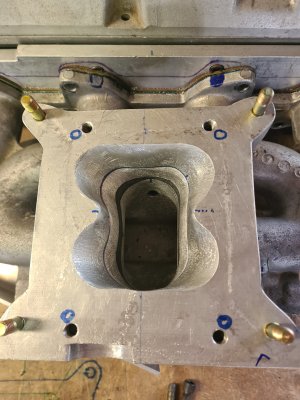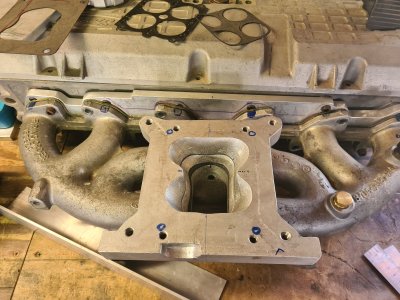I've narrowed down the carb selection to two carburetors for my 250 2V build in my 74 XB Futura and I'd like some opinions.
I'm thinking of either going for an Autolite 2100 with 1.23 venturi (356cfm) on the factory 2 Manifold
Or
A 4100 with 1.08 (480 cfm) venturi on an Aussiespeed manifold.
Obviously the 4100 is a fair bit more expensive as I have to purchase both the manifold and carb (unless I use a 2bbl to 4bbl adapter, not sure how well that would work) but it would yield more overall power and I suspect better economy at light throttle settings given how much smaller the primaries are.
The 2100 would be easier to mount as I already have all the brackets and manifold to suit and cheaper as I only have to buy the carb (I have a rebuilt 1.14 venturi already).
I am chasing 220-250 bhp from the engine.
Which is a 30 thou over 250 with a 2v head with oversized valves fitted, a 214@50 thou speco cam (may change to a 224@50 thou crow cam) comp ratio is 9.5:1. The ignition will be a rebuilt points dizzy with a MSD ultra 6AL plus CDi module. The exhaust is pacemaker header into a dual 2.25inch system.
The trans is a WC T5 and the diff is a 3.27:1 lsd.
Is 220-250bhp doable or am I dreaming?
What would give better results the 2 barrel or 4 barrel?
I'm thinking of either going for an Autolite 2100 with 1.23 venturi (356cfm) on the factory 2 Manifold
Or
A 4100 with 1.08 (480 cfm) venturi on an Aussiespeed manifold.
Obviously the 4100 is a fair bit more expensive as I have to purchase both the manifold and carb (unless I use a 2bbl to 4bbl adapter, not sure how well that would work) but it would yield more overall power and I suspect better economy at light throttle settings given how much smaller the primaries are.
The 2100 would be easier to mount as I already have all the brackets and manifold to suit and cheaper as I only have to buy the carb (I have a rebuilt 1.14 venturi already).
I am chasing 220-250 bhp from the engine.
Which is a 30 thou over 250 with a 2v head with oversized valves fitted, a 214@50 thou speco cam (may change to a 224@50 thou crow cam) comp ratio is 9.5:1. The ignition will be a rebuilt points dizzy with a MSD ultra 6AL plus CDi module. The exhaust is pacemaker header into a dual 2.25inch system.
The trans is a WC T5 and the diff is a 3.27:1 lsd.
Is 220-250bhp doable or am I dreaming?
What would give better results the 2 barrel or 4 barrel?

